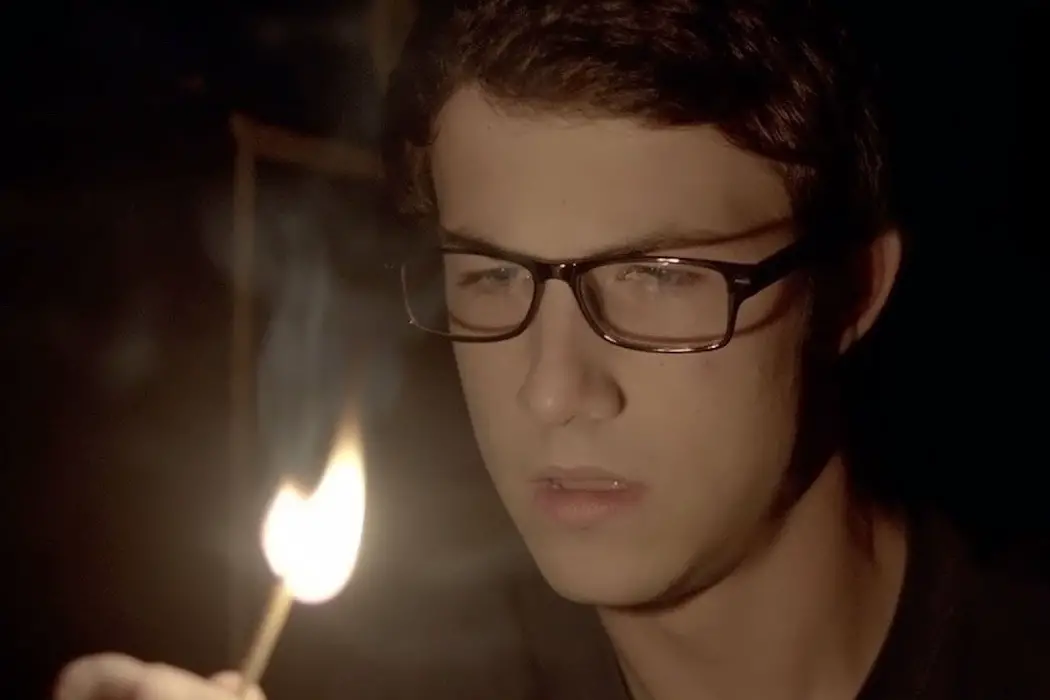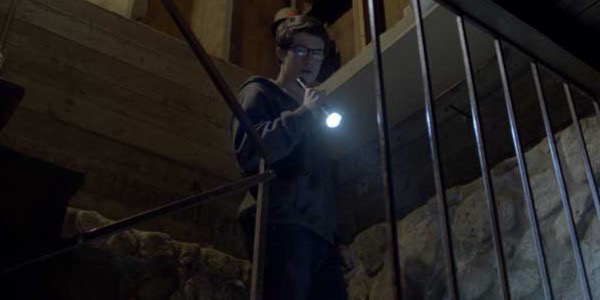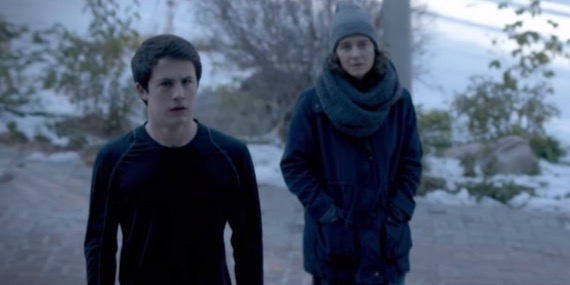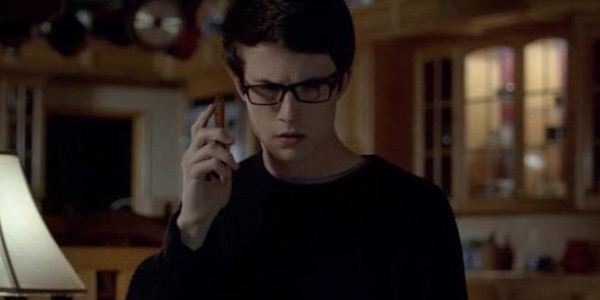THE OPEN HOUSE: A Disappointing Case Of “How Did That Get There?”

Stephanie Archer is 39 year old film fanatic living in…
Over the past few years, Netflix has broken free of pre-existing content and has found success in its own original works. Beasts of No Nation, Mudbound, Stranger Things and Making a Murderer are just a few of their whirlwind successes that we have all have come to enjoy. However, with every triumph, there eventually is a shortfall. Unfortunately, Netflix has found this with the release of The Open House.
A convoluted tale of a grieving mother and son who are looking for solace at a sister’s home while it is on the market find themselves terrorized by persons unknown – in a town that is as creepy as the bumps in the night. Yet, where co-writers/directors Matt Angel and Suzanne Coote aim to scare, unfortunately The Open House proves to be a predictable tale with few frights and a serious case of “how did that get there?”
The Open House
Opening an a cold morning, Logan (Dylan Minnette) completes his morning training, bringing in a time that could make him eligible for the upcoming Summer Olympics in Japan. Yet, his feeling of success is short-lived as he overhears time is running out for his parents, who are facing financial hardship due to his father’s continuing unemployment. To end the awkwardness of Logan walking into their discussion, Logan’s father (Aaron Abrams) suggests they make a run to the store – an errand that will prove to be fatal. Almost moments after sharing a mutual love of a particular song on the radio, Logan watches helplessly as his father dies in a hit-and-run accident.

Struggling to cope both emotionally and financially, Naomi’s (Piercey Dalton) sister offers an escape, a place to get away from it all until she and Logan can get back on their feet again. No sooner have they arrived when the creeps begin to set in as Naomi almost strikes a man standing in the road. Catching their breath, the horrors of their own tragedy fresh in their minds, Logan and Naomi find the man vanished. Yet it is not just the mystery man on the road that has them uneasy.
While stocking up on food, an older woman named Martha (Patricia Bethune) at the convenience store addresses them by name and apologizes for the death of their loved one. Explaining she is to be their neighbor and that it was Naomi’s sister that informed her of their arrival, Logan and his mother finally make their way to their new home – apprehensive but ready for a good night’s sleep.
While sleep finds his mother quickly, Logan finds himself faced with random cars in the driveway, their headlights piercing through the blinds. Investigating the strange occurrences outside, Logan is confronted once more by the old woman who seems distraught at his presence in the house, frantically racing off into the night. Unnerved and alarmed, Logan makes his way back into the house and finally drifts off to sleep.
The confusion of the night blends into morning as Logan awakes to find a strange man reaching towards him, a realtor annoyed that Logan and his mother had slept in. During their stay, Naomi and Logan must leave on Sundays during the home’s Open House – a time when the house is open to anyone without an appointment or sign-in. Upon their return, however, items begin to go missing, relocate or turn themselves off. In a matter of days, Logan and Naomi come to realize their escape from the horrors of reality may have sealed their doom.
Collapse of a Horror
From the very start of this film, I had a feeling this was not going to be what I have come to expect from Netflix productions. Right from the very beginning, there is an intense focus on Logan’s running, glasses and contact lenses. Co-writers/directors Matt Angel and Suzanne Coote practically spend a large part of the first few scenes making sure that you are highly aware of these elements – and that they are not forgotten. From this moment, viewers can easily predict that at some point in the film the character will run into trouble due to or requiring the use of one or a combination of these elements. Sadly, it removes any opportunity to surprise, as now I am expecting it.
This in your face attention to detail does not stop here. Angel and Coote assumes their audience to be unable to see the trail of the killer as well, making shots obvious to the viewer. A cell phone placed on a bureau to charge, a bowl of cereal left clearly on a night stand, each of these a central focus in a scene only to disappear and reappear in a different location later on. You know something is going to happen to these items long before they even vanish, seeping much of the fright and suspense from the film.

Long edited shots of the camera zooming into the basement door, interlaced between shots of our characters showering or moving about the house are an unnecessary need to fill space. They are not much for viewers to really work with and mull over, happening far too frequently throughout the film. While they are meant to intensify and put audiences at the edge of their seat, instead it runs the risk of losing the attention of viewers who know something is about to happen – eventually.
The only moments audiences will find themselves wrong in their predictions is when the elements they are using to predict are irrelevant and have nothing to do with the story. Characters that have no purpose or are underutilized, items around the home and even character attributes are misleading in predicting, but it does not leave viewers frightened with the true meat of the story – rather annoyed they have been misled.
The acting was as good as it could be based on the script and character structure they had to work with. I had originally chosen to watch this film because of its lead actor Dylan Minnette – who I had seen when he was much younger guest starring on Grey’s Anatomy and most recently playing the role of Clay on Netflix’s 13 Reasons Why. While his performance in The Open House reflected his continual growth as an actor, I found it difficult to see him as anyone other than Clay – his teenage angst and frustration mirroring that of 13 Reasons Why. Piercy Dalton was believable as a grieving mother struggling with her own emotions, financial instability and teenage son. She was the most believable, which is not to negate the performances of the other actors listed – her character was clearly the most strongly developed, as well as written.
The Horror of Under Utilization
The worst part about The Open House for me was the underutilization the film experienced across the board. The opening scene of Logan running leads the viewers to believe and predict that it will obviously come into play later on in the film, especially as he is continually shown training and referenced in conversation. Yet, viewers will find themselves disappointed as it is just a part of his character and a random part of the story that is highly underutilized. It is strictly a hobby that adds nothing to the story and does not drive the plot. It just exists as a part of Logan – a part we see over and over again with no solid cinematic use.
Logan’s father dying at the beginning of the film is a common cliché to render the emotional state of our main characters questionable, and is a driving force to place them in the middle of nowhere. While effective in other films, it was unnecessary, as the financial strain introduced in the beginning of the film would have sufficed to move the story to a rural location. The death of his father plays no other role in the film, leaving its use wasteful.

The man in the road Logan and his mother almost hit is also never addressed. It’s an event that happens to put the creeps into the audience, but is an ineffective tool and becomes more frustrating than scary as you never find out who he was, what he was doing there, and how he is important to the story.
Even Martha, the old woman from the convenience store that lives next door, was only used to inject fear into the film – randomly at times. She has no real purpose to the end game, to the story or to the plot. Even Chris (Sharif Atkins), another cashier in town who flirts with Naomi upon her arrival, is a tool rather than a person. Both he and Martha signal a deeper and darker horror that is closing in on the new family, yet they are a flicker that never truly receive any fuel.
Conclusion: The Open House
With a multitude of successful hits across television and film, Netflix misses a beat with their latest film The Open House. With a convoluted story and underutilized characters and elements of storytelling, this film falls flat before it even begins.
Have you seen The Open House yet? Tell us your thoughts in the comments below!
The Open House is was released for streaming in the USA on January 19, 2018. For all international release dates, see here.
Does content like this matter to you?
Become a Member and support film journalism. Unlock access to all of Film Inquiry`s great articles. Join a community of like-minded readers who are passionate about cinema - get access to our private members Network, give back to independent filmmakers, and more.













